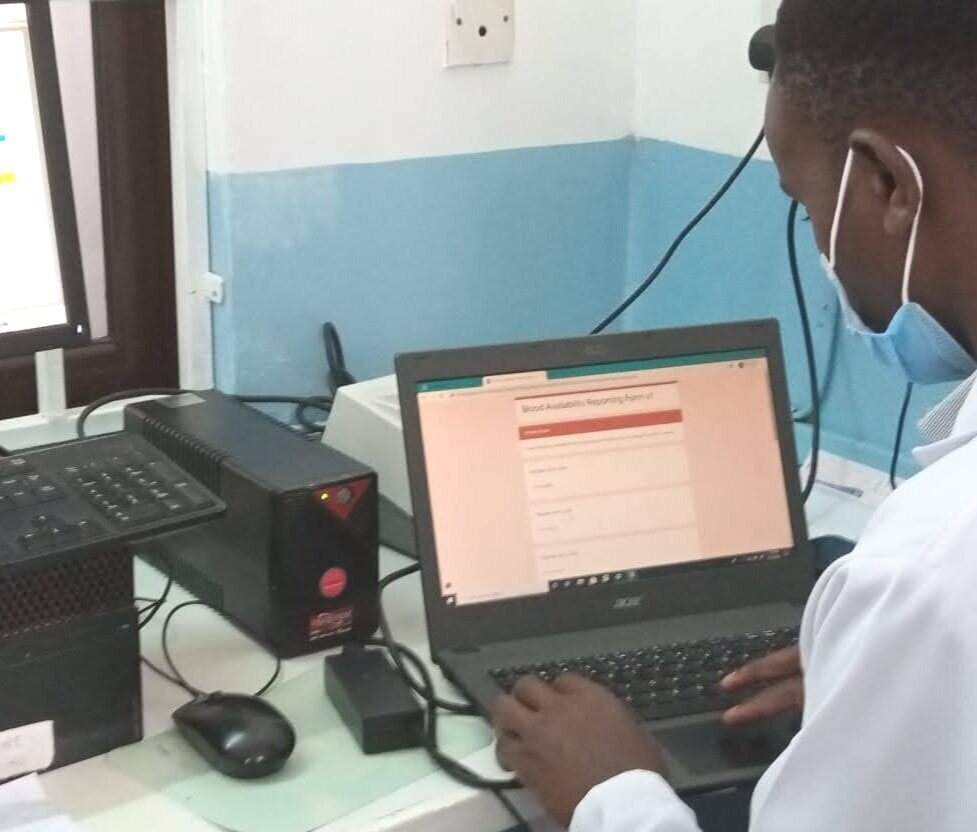Digital technologies have the potential to radically shift models of care and bring powerful new tools to patients and providers. But they don’t need to cost the earth.
Last year, Jacaranda noticed that frontline health providers across Kenya were struggling to find ready supplies of blood- an issue that was costing lives. Nurses reported precious minutes lost as they manually called round neighboring facilities and labs, hoping for enough units of the right blood type and product to deal with their emergency. Jacaranda saw that low-cost technology could help streamline the process of finding blood sources, and launched a simple and replicable tool whereby lab managers could input the blood availability in their facilities, and providers easily track the nearest available blood by type and units.![]()
Jacaranda believes in a ‘test, monitor, and adapt’ model to innovation, starting with a cost-effective solution, rapidly deploying it, and finally iterating to achieve optimum design and usability. Originally built on simple, free-to-use tools like Google Forms, Sheets, and My Maps, Jacaranda could help other organizations build and manage their own blood supply trackers via a free ‘how-to’ guide. But we didn’t stop there. A tool that once relied on manual input quickly became automated, and further tweaking made it possible for nurses to track and order blood – all from their phones.
Now, it’s time to innovate again. With – at peak – 31 facilities across two counties updating the tracker, Jacaranda realized that the tool could serve a wider purpose as an inventory management tool. Strong inventory management helps providers know when and where to replenish medicines with limited lifespans, throw out those that have expired, and speed through operational bottlenecks – all meaning they can focus on what’s really important – their patients.
For five month’s now, Jacaranda’s George Mutti has worked on an update to the tool that will help health providers and managers understand not only whether a facility is short of stock, but also why. Through an easy-to-use dashboard, providers can track where blood stock is being used and for what reason, and scroll through a menu of different blood products- whether fresh frozen plasma, whole blood, packed cells, or types – whether A- or O+. The dashboard tracks the various requests for blood by time, status, and approval – the latter ensuring that donor facilities, once notified, commit to send out the needed blood via a dispatch form built into the platform.
Jacaranda saw an opportunity to test the tool as part of a wider project in Kakamega County, where blood stocks were consistently low and not being replenished in many facilities, and providers were using very manual methods to track what was available. Jacaranda realized it could offer instant visibility of supplies through its management tool – and take this one step further by improving transport between blood satellite centers and facilities. By pairing simple tech innovations with practical solutions on the ground, Jacaranda is helping plug gaps in the wider health system, and ensure this is sustainable.
The updated tool will be piloted in three of Kenya’s counties – Kakamega, Bungoma, and Makueni – as a chance to test it’s usability, relevance, and accessibility with the very people it will benefit; the providers. The tool will be rolled out country-wide next year, but its impact could be global; other organizations will be able to replicate our open source tool – for the benefit of patients everywhere.
By empowering providers with real-time information, we are helping limit the unnecessary, life-threatening delays in clinical emergencies – giving them more time to do what they do best; getting people better.

